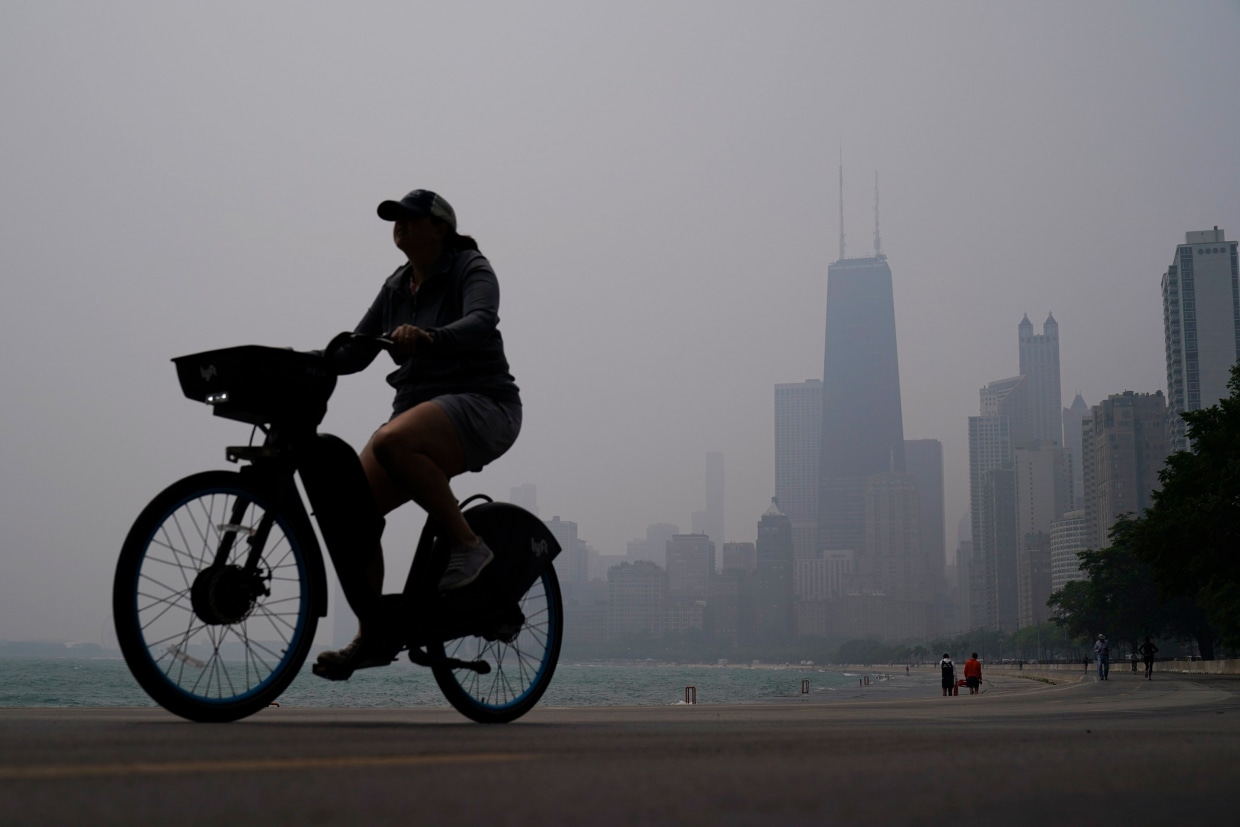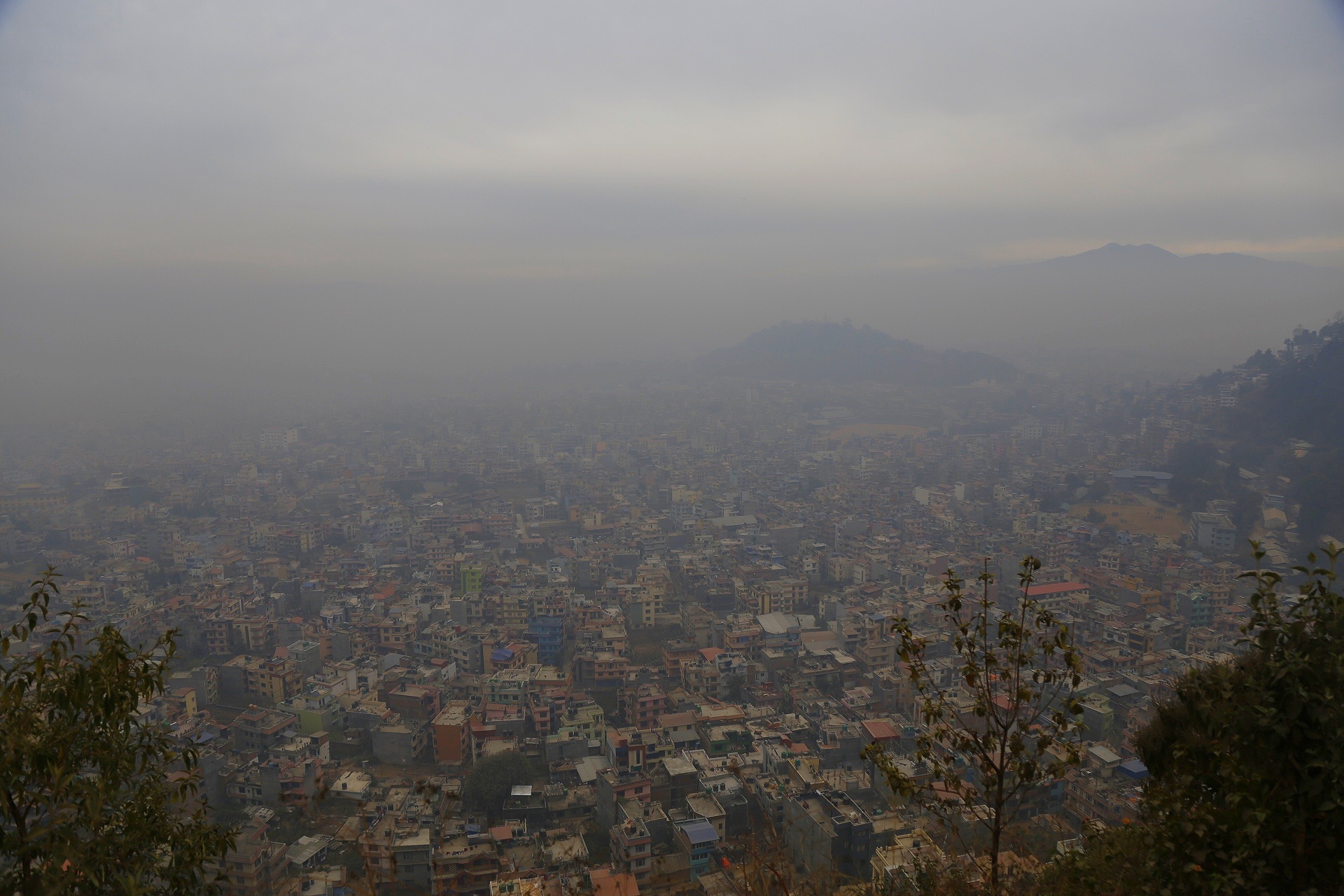Air Quality Report: Chicago Metropolitan Area – August 6, 2025
Executive Summary: Air Quality and Sustainable Development Goals
As of August 6, 2025, air quality in Chicago has deteriorated to a level classified as “unhealthy for sensitive groups,” presenting a significant challenge to the achievement of several Sustainable Development Goals (SDGs). The primary pollutant is PM2.5, exacerbated by ground-level ozone and wildfire smoke. This situation directly undermines SDG 3 (Good Health and Well-being) by posing health risks to the population and SDG 11 (Sustainable Cities and Communities) by degrading the urban environment. Chicago’s ranking as one of the most polluted major cities globally highlights an urgent need for strategies aligned with these goals.
Analysis of Air Quality Conditions and SDG Implications
Current Air Quality Status and Impact on SDG 3 and SDG 11
The air quality index indicates conditions that are detrimental to public health, particularly for vulnerable populations. This environmental stressor is a direct impediment to creating the safe, resilient, and sustainable urban environments envisioned in SDG 11. The high concentration of PM2.5 pollutants is a critical public health concern, directly conflicting with the targets of SDG 3, which aims to ensure healthy lives and promote well-being for all at all ages.
Primary Pollutants and Contributing Factors
The current air quality alert is attributed to two main factors, each with distinct connections to sustainable development challenges:
- Ground-Level Ozone: A Challenge to Sustainable Urban Development (SDG 11)
The formation of ground-level ozone, Chicago’s primary pollutant, is driven by the chemical reaction of emissions from vehicles, industrial facilities, and power plants in the presence of sunlight. This issue is central to SDG 11, as it stems directly from urban and industrial activities that require more sustainable management to reduce their environmental and health footprint. - Transboundary Wildfire Smoke: A Threat to Climate Action and Life on Land (SDG 13 & SDG 15)
Smoke from over 700 Canadian wildfires is a significant contributor to the poor air quality. This transboundary pollution highlights the interconnectedness of environmental challenges, linking directly to SDG 13 (Climate Action), as climate change increases the frequency and intensity of wildfires, and SDG 15 (Life on Land), which addresses the protection of forest ecosystems.
Geographical Scope and Public Health Advisories
Affected Regions and Transboundary Pollution Concerns
The impact of elevated ozone and wildfire smoke extends beyond Chicago, affecting a wide area and demonstrating the need for regional cooperation as promoted under SDG 11. The affected counties include:
- Cook, Illinois
- DuPage, Illinois
- Grundy, Illinois
- Kane, Illinois
- Kendall, Illinois
- LaPorte, Indiana
- McHenry, Illinois
- Newton, Indiana
- Porter, Indiana
- Will, Illinois
Official Alerts and Alignment with SDG 3 (Good Health and Well-being)
In response to the hazardous conditions, governmental bodies have issued public health warnings. These actions represent a critical implementation of SDG 3, aiming to protect citizens from environmental health risks.
- The Illinois Environmental Protection Agency has declared an Air Pollution Action Day for several counties, including Cook and DuPage.
- The National Weather Service has issued air quality alerts for multiple counties in northwest Indiana, such as Lake, Porter, and LaPorte.
These alerts are essential measures to mitigate the immediate health impacts on the population, fulfilling a core objective of ensuring public well-being within the SDG framework.
1. Which SDGs are addressed or connected to the issues highlighted in the article?
-
SDG 3: Good Health and Well-being
This goal is directly relevant as the article focuses on the health implications of poor air quality. It explicitly states the air is “unhealthy for sensitive groups” and mentions that the conditions are “increasing health risks, especially for individuals with respiratory issues.” This connects the environmental problem of air pollution to human health and well-being.
-
SDG 11: Sustainable Cities and Communities
The article centers on the environmental conditions within a major urban area, Chicago. It highlights the city’s struggle with air pollution, noting it is “among the most polluted major city in the world.” This directly relates to the goal of making cities and human settlements inclusive, safe, resilient, and sustainable, with a particular focus on their environmental impact.
-
SDG 13: Climate Action
This goal is connected through the mention of “Canadian wildfire smoke” as a primary contributor to the poor air quality. The article notes that “smoke from over 700 wildfires currently burning across Canada continues to impact Chicago.” Large-scale wildfires are frequently linked to climate change, which exacerbates the conditions that lead to them. The article discusses a climate-related hazard impacting a major city.
2. What specific targets under those SDGs can be identified based on the article’s content?
-
Target 3.9: By 2030, substantially reduce the number of deaths and illnesses from hazardous chemicals and air, water and soil pollution and contamination.
The article’s entire premise is based on the presence of air pollution (PM2.5, ground-level ozone) and its direct threat to human health. The issuance of an “Air Pollution Action Day” and warnings about risks for people with respiratory issues directly address the need to mitigate illnesses caused by air pollution, aligning perfectly with this target.
-
Target 11.6: By 2030, reduce the adverse per capita environmental impact of cities, including by paying special attention to air quality and municipal and other waste management.
The article’s focus on Chicago’s air quality, identifying it as the “3rd most polluted major city” on a specific day, directly relates to this target. It discusses the specific pollutants (PM2.5, ozone) that define the city’s adverse environmental impact, which is the core concern of Target 11.6.
-
Target 13.1: Strengthen resilience and adaptive capacity to climate-related hazards and natural disasters in all countries.
The article describes a response to a natural hazard (wildfire smoke) that has crossed borders. The implementation of “air quality alerts” by the National Weather Service and the Illinois Environmental Protection Agency are examples of adaptive measures designed to protect the population and strengthen resilience against the impacts of such climate-related events.
3. Are there any indicators mentioned or implied in the article that can be used to measure progress towards the identified targets?
-
Indicator 3.9.1: Mortality rate attributed to household and ambient air pollution.
While the article does not provide mortality statistics, it strongly implies this indicator by highlighting the severe health risks. Phrases like “unhealthy for sensitive groups” and “increasing health risks” point directly to the morbidity and potential mortality that this indicator is designed to track. The concern for public health due to air pollution is the basis for this indicator.
-
Indicator 11.6.2: Annual mean levels of fine particulate matter (e.g. PM2.5 and PM10) in cities (population weighted).
This indicator is explicitly mentioned in the article. It states, “The main pollutant contributing to this status is PM2.5.” The entire discussion revolves around the high concentration of this specific pollutant. The ranking of Chicago as the “3rd most polluted major city” is a direct, albeit temporary, measurement related to this indicator.
-
Indicator 13.1.2: Number of countries that have adopted and implemented national disaster risk reduction strategies in line with the Sendai Framework for Disaster Risk Reduction 2015–2030.
This indicator is implied through the actions described in the article. The fact that “The Illinois Environmental Protection Agency has issued an Air Pollution Action Day” and “The National Weather Service has declared air quality alerts” demonstrates the implementation of a local disaster risk reduction strategy. These alerts are a formal system to warn and protect citizens, which is a key component of such strategies.
4. Create a table with three columns titled ‘SDGs, Targets and Indicators” to present the findings from analyzing the article. In this table, list the Sustainable Development Goals (SDGs), their corresponding targets, and the specific indicators identified in the article.
| SDGs | Targets | Indicators |
|---|---|---|
| SDG 3: Good Health and Well-being | Target 3.9: By 2030, substantially reduce the number of deaths and illnesses from hazardous chemicals and air, water and soil pollution and contamination. | Indicator 3.9.1 (Implied): Mortality rate attributed to household and ambient air pollution, implied by the article’s focus on health risks (“unhealthy for sensitive groups”). |
| SDG 11: Sustainable Cities and Communities | Target 11.6: By 2030, reduce the adverse per capita environmental impact of cities, including by paying special attention to air quality. | Indicator 11.6.2 (Mentioned): Annual mean levels of fine particulate matter (e.g. PM2.5 and PM10) in cities, as the article explicitly names “PM2.5” as the main pollutant. |
| SDG 13: Climate Action | Target 13.1: Strengthen resilience and adaptive capacity to climate-related hazards and natural disasters in all countries. | Indicator 13.1.2 (Implied): Number of countries that have adopted and implemented national disaster risk reduction strategies, implied by the issuance of an “Air Pollution Action Day” and “air quality alerts” by government agencies. |
Source: iqair.com







